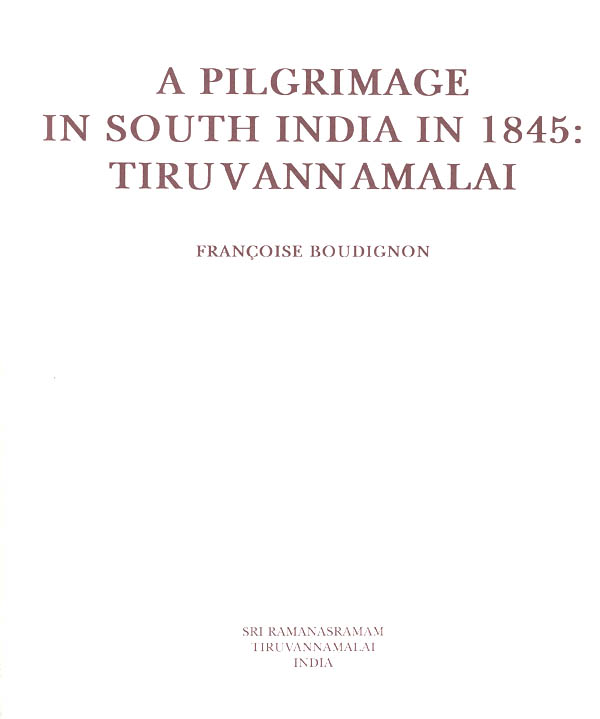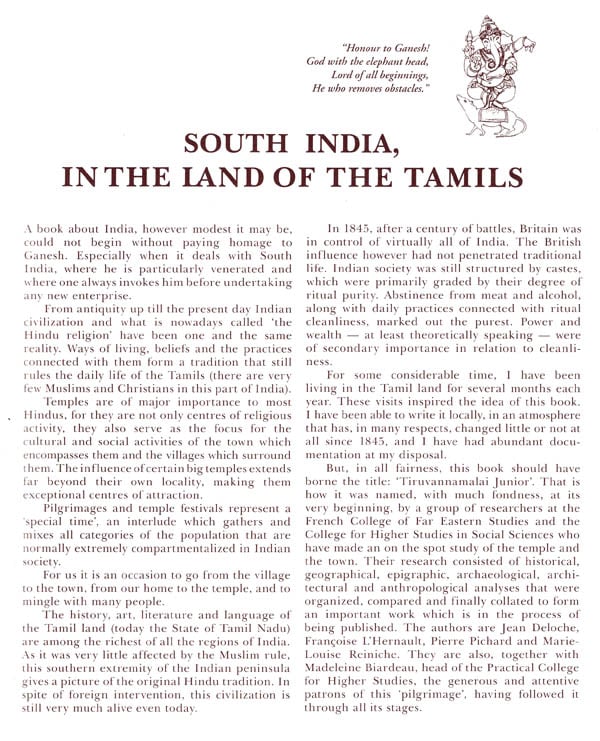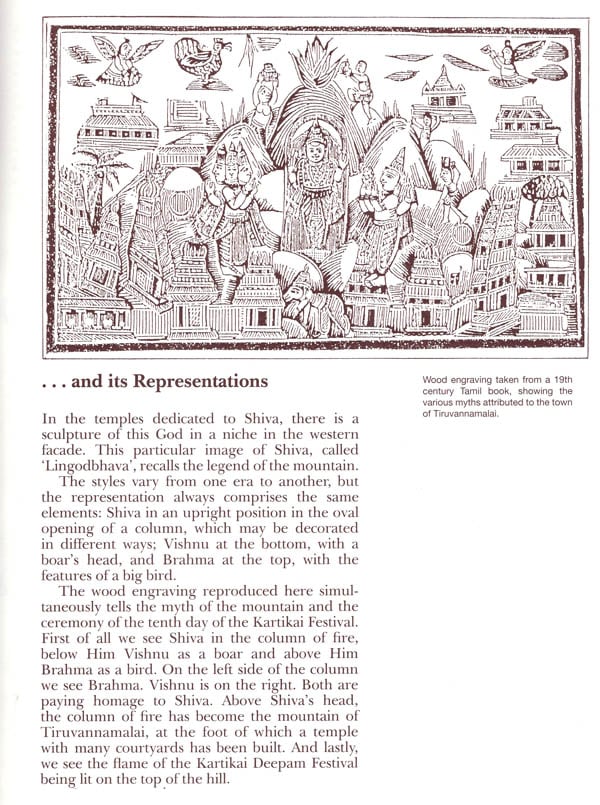
A Pilgrimage In South India In 1845: Tiruvannamalai
Book Specification
| Item Code: | NAW712 |
| Author: | Francoise Boudignon |
| Publisher: | Sri Ramanasraman,Truvannamalai |
| Language: | English |
| Edition: | 2004 |
| ISBN: | 9788182882478 |
| Pages: | 64 (Throughout Color Illustrations) |
| Cover: | HARDCOVER |
| Other Details | 11.00 X 9.00 inch |
| Weight | 420 gm |
Book Description
The South Indian town of Tiruvannamalai, in recent times associated with the great sage Ramana Maharshi, has, for more than a thousand years, been a major pilgrimage centre for devotees of Lord Siva. Its major festival, occurring between mid-November and mid-December, attracts hundreds of thousands of devotees. In this charming and beautifully-illustrated account, Françoise Boudignon, the author, describes the main components of the festival along with the beliefs that underlie them. The story unfolds through the eyes of a family of peasants who journey from their village to attend the ten-day event. A wide spectrum of Hindu customs, practices and beliefs unfold as the family explores the wonders and the traditions of their ancient culture.
Tiruvannamalai, a medium-sized town in South India, has been attracting Hindu pilgrims in large numbers for hundreds of years. As long ago as the sixth century AD poets and Hindu holy men were singing songs in praise of it, extolling its greatness, its power and its sanctity.
The object of all this devotional fervour is and has been the local mountain - called Annamalai in Tamil and Arunachala in Sanskrit - and the temple dedicated to it on its eastern side. The image of God in the temple and the mountain which rises up behind it are held to be one and the same entity: Siva, the Supreme Deity for millions of Hindus.
The principal local myth, which will be retold later in the book, narrates the story of how Siva chose this place to manifest on earth and how, in fulfilment of a promise. He took the form of a mountain so that devotees down the centuries could have a tangible; farm to revere and worship. So., for the millions of pious Hindus who accept this story at face value, the mountain is not merely a place where God once appeared, or where He presides in a mysterious, invisible way, it is Siva Himself manifesting in a physical form, a form which bestows grace on all who approach it.
The story may seem quaint and unbelievable to western ears, but it cannot be lightly and laughingly dismissal. Mythology articulates in an anthropomorphic form the innermost spiritual feelings and experiences of a people. So, since Hindu mystics and even ordinary pilgrims have felt, directly and indubitably, the radiant spiritual power of the mountain, one can say that the local myths are merely an attempt to frame, in a conventional Hindu format, the genuine experiences of generations of devout visitors.
So how does a mountain come to be such a powerful place? There is no satisfactory 'scientific' answer; one simply has to accept it as an inexplicable mystery.
Down the centuries a succession of Hindu saints has been drawn to the mountain. Through worshipping it they have experienced, in its presence, the grace of Siva, God Himself in a Hindu guise, and through its power they have attained spiritual liberation or union with the Divine. Not everyone, of course, has the inclination to be a saint or a mystic. For millions of ordinary Hindus Arunachala is the all-powerful God: one serves Him, prays to Him, worships Him, and takes one's troubles to Him, without bothering about the higher mystical states. The story that unfolds in this book tells of one such family of Hindus who revere Arunachala as the Supreme Lord who answers prayers and grants boons. As they make their pilgrimage to Tiruvannamalai in 1845, in fulfilment of a vow to the mountain, we get an intriguing and fascinating glimpse into 19th century Hindu India.
The festival they attend in Tiruvannamalai is still celebrated in much the same way that it was in 1845. Nowadays about 250,000 pilgrims participate in the climactic final day of the festival: some go to the top of the hill to witness the lighting of the sacred beacon: others watch it from the main temple or from the many vantage points around the mountain. Almost all of them will perform the ritual barefoot walk around the mountain, a distance of thirteen kilometres, on the final morning of the celebrations. Whether one is a Hindu or not, it is still an awe-inspiring sight to watch this vast flowing river of humanity wend its way around the mountain in a pious act of reverence and homage to God.
**Contents and Sample Pages**










